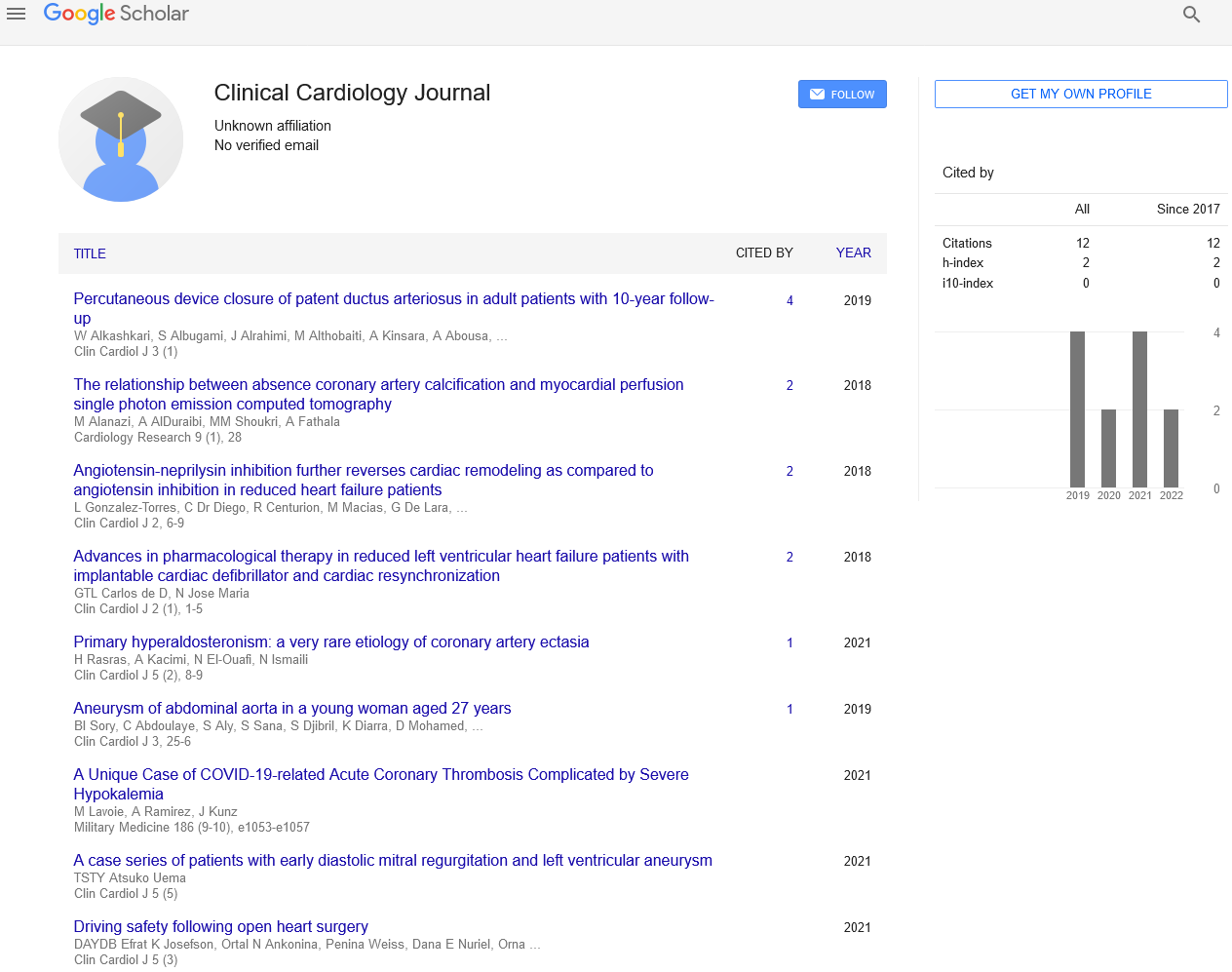The cause of coronary artery disease is unknown
Received: 17-Mar-2023, Manuscript No. PULCJ-23-6231; Editor assigned: 20-Mar-2023, Pre QC No. PULCJ-23-6231 (PQ); Reviewed: 03-Apr-2023 QC No. PULCJ-23-6231; Revised: 17-May-2023, Manuscript No. PULCJ-23-6231 (R); Published: 25-May-2023
Citation: Brown J. The cause of coronary artery disease is unknown. Clin Cardiol J 2023;7(1):1.
This open-access article is distributed under the terms of the Creative Commons Attribution Non-Commercial License (CC BY-NC) (http://creativecommons.org/licenses/by-nc/4.0/), which permits reuse, distribution and reproduction of the article, provided that the original work is properly cited and the reuse is restricted to noncommercial purposes. For commercial reuse, contact reprints@pulsus.com
Description
Plaque accumulation in the walls of the arteries supplying blood to the heart is the primary cause of Coronary Artery Disease (CAD). Over time, plaque, which is made up of cholesterol deposits, causes the inner walls of the arteries to constrict. The coronary arteries, which are located right on top of our heart muscle, are the blood vessels that feed our heart muscle with oxygen rich blood to keep it pounding. The left anterior descending artery, right coronary artery, left circumflex artery, and right coronary artery are the four basic varieties of coronary arteries.
Plaque accumulating inside our arteries results in atherosclerosis. Plaque is made up of fatty compounds, waste materials, calcium, and fibrin, which helps blood clot. Our arteries shrink and harden as plaque builds up on their walls. Our arteries are damaged by plaque, which prevents blood from reaching our heart muscle. Ischemia, or insufficient blood flow, prevents our hearts from receiving the oxygen and nutrients they require to function correctly. Angina, also known as inadequate blood supply to the heart muscle, can cause chest pain or discomfort and may cause a heart attack.
Symptoms
Mild symptoms of coronary artery disease that show our heart is working harder to pump oxygen rich blood to our body. The most typical symptoms are walking upstairs at night and experiencing chest pain or shortness of breath. We may not always be aware of it until we experience a heart attack. Angina is one of the heart attack symptoms. Heaviness, tightness, pressure, hurting, burning, numbness, fullness, and squeezing are all symptoms of angina. Women may have a variety of heart attack symptoms, such as stiffness and pain in the shoulders, neck, and abdomen.
Diagnosis
Electrocardiograph examinations, which record the electrical activity of the heart and can identify heart attacks, ischemia, and other heart related conditions, are among the possible diagnostic procedures for coronary arteries. Exercise stress tests, sometimes referred to as treadmill tests, and are used to assess how well the heart is working. These tests can also identify coronary occlusions and angina. Small tubes are inserted into the heart's blood veins during a cardiac catheterization examination to assess heart function, including the existence of coronary artery disease.
Reducing our risk factors and possibly altering our lifestyle are the initial steps in treating coronary artery disease. The things that the treated people should do include quitting smoking, managing health issues, eating a heart healthy diet, limiting alcohol consumption, and increasing our level of activity. Our healthcare practitioner will suggest statins, bile acid sequestrates, niacin, fibrates, and other drugs to lower our cholesterol as well as nitrates/nitro glycerin to halt angina in order to better manage our risk factors for heart disease.
Interventional procedures are nonsurgical ways to clear artery blockages and plaque accumulation. Stenting and balloon angioplasty are frequent operations. When the coronary arteries are blocked, surgery called coronary artery bypass graft involves making a new conduit for blood to flow. In most situations, the surgeon builds a new conduit to transport oxygen rich blood to the heart by removing blood veins from our chest, arm, or leg.





